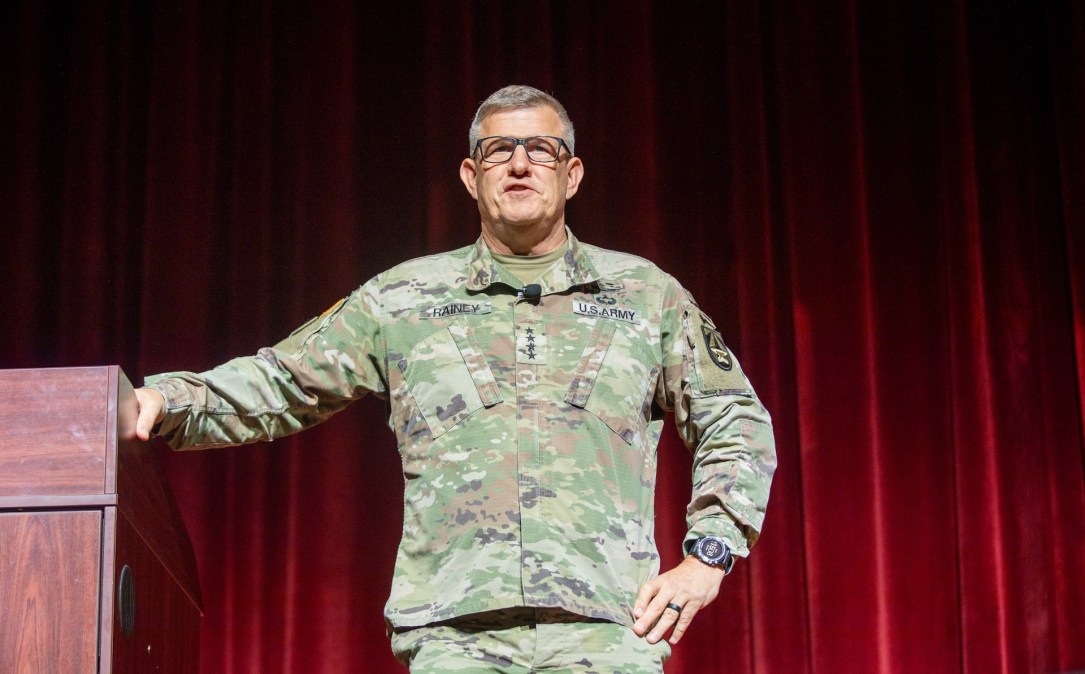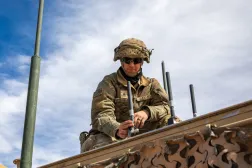One thing Gen. Rainey says he left unaccomplished as he retires

AUSTIN — After 38 years of service in the U.S. Army, and the last three as commanding general of Army Futures Command, Gen. James Rainey will retire next week as AFC merges with Training and Doctrine Command on Oct. 1.
A four-star general, Rainey will depart the service with a long list of transformative successes realized under his tenure — he points to things like the introduction of Next Generation Command and Control, modernizing the way the department buys software, and the Army’s annual Project Convergence exercise, where it works with the joint force to test new technologies in the field.
However, he will leave the role with at least one major goal not yet completed: speed.
“It’s just the speed,” Rainey said Thursday during a Special Competitive Studies Project event in Austin, asked what he would leave uncompleted.
“We know what we want. With very few exceptions, the technology exists,” he said. But the ability to work within the acquisition framework to bring it to bear swiftly hasn’t caught up.
At least not yet, Rainey said. He’s confident in the work Army leadership has undertaken to reform what it can do to move faster, teasing a forthcoming announcement of how the Army is “going to reorganize some of our acquisition efforts to create unity of effort.”
“The secretary and chief have asked Congress to give us more flexibility — not more money, but more flexibility to move the money we do have,” he said, explaining that having to ask Congress each time for approval to move money from one program to another bogs the acquisition process down.
The Army is “on the cusp of that” happening, Rainey said, and in the next six to 18 months, “you’re going to see a gigantic acceleration.”
Speaking of speed, he further pointed to artificial intelligence as another area where the Army needs to move more quickly.
“I don’t know that we’re adopting it as fast as we should be,” he said. “The biggest thing for us is just getting it in the hands of people…let them start using it.”
Still, where the Army has adopted AI, the returns on those investments have brought exponential increases to process improvement and efficiency that can lead to the speed the service seeks. In cases where it may have previously taken 100 soldiers a week to do a job, with AI, “we’re finding thousands of examples where five people can do it in a day,” Rainey explained.
“We’re the world’s best military. We’re also arguably the world’s best bureaucracy,” the retiring general said. “So, you know, there’s no shortage of opportunities to improve processes.”
That has extended to the warfighting side as well, particularly as the Army matures as a data-centric organization that can more readily work with the world’s leading AI companies or build models itself, Rainey commented.
An example of this, he pointed to, is 4th Infantry Division, which has seen success using agentic AI under the Next Generation Command and Control initiative to speed fires by 10x with just 10% of the training previously needed, according to Rainey.
Rainey will be the last general to lead Army Futures as a lone command. When the merger with TRADOC takes effect Oct. 1, the resulting organization will be called Army Transformation and Training Command, based in Austin.
Lt. Gen. David Hodne will receive his fourth star and assume leadership of the new command.
“You will have more authority, more ability, basically the entire institutional Army, to get the ability to transform even faster,” Rainey commented on the change. “So, stay in touch. Names will change, patches will change, but we’re not going. The Army is not leaving Austin, and we’re doubling down on transforming.”






